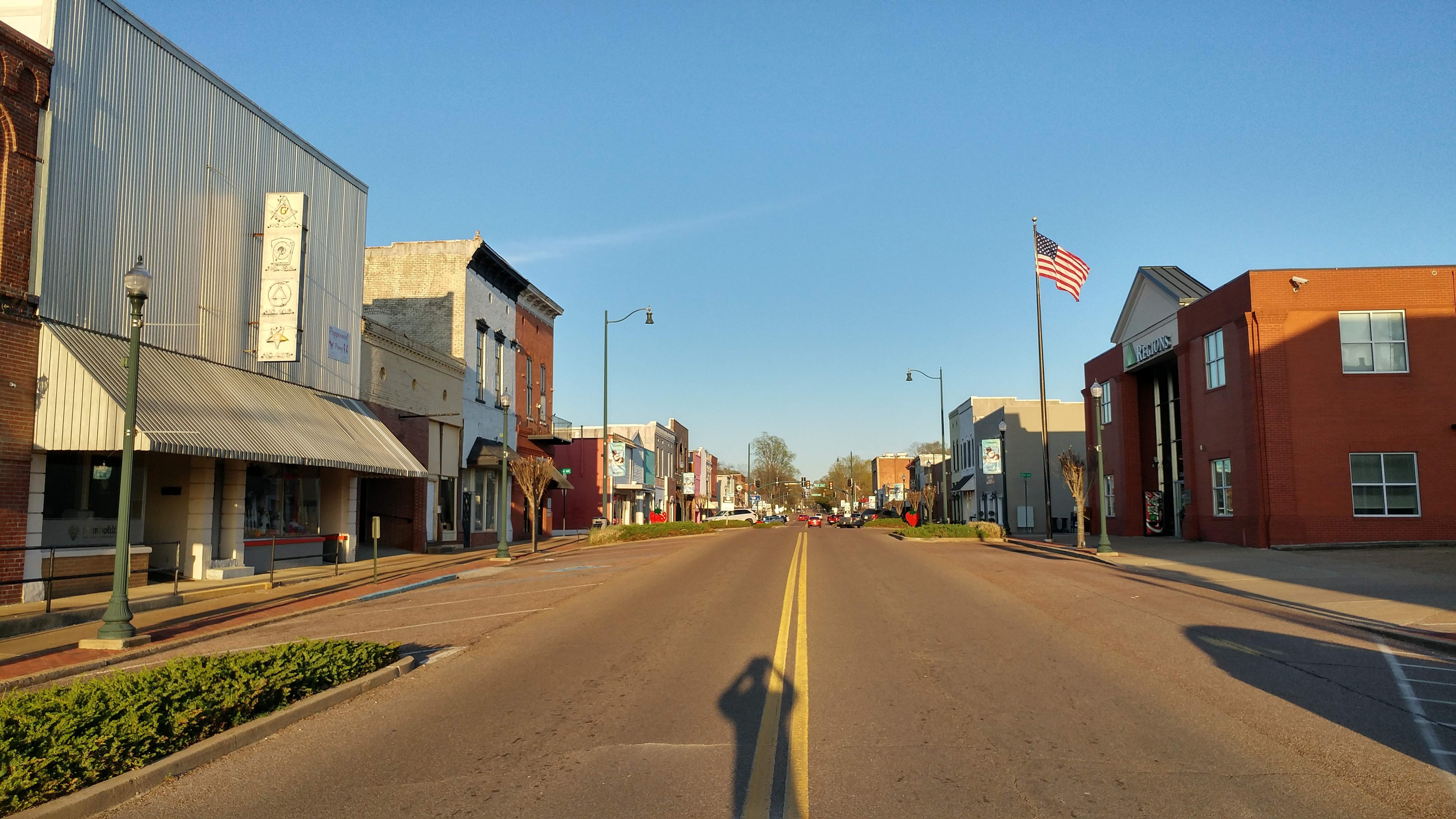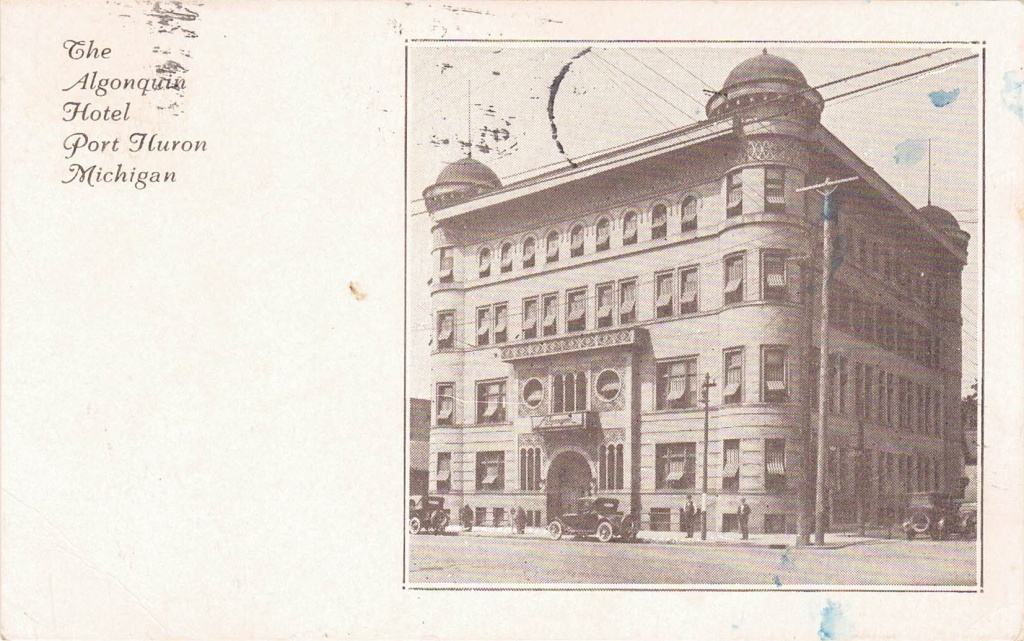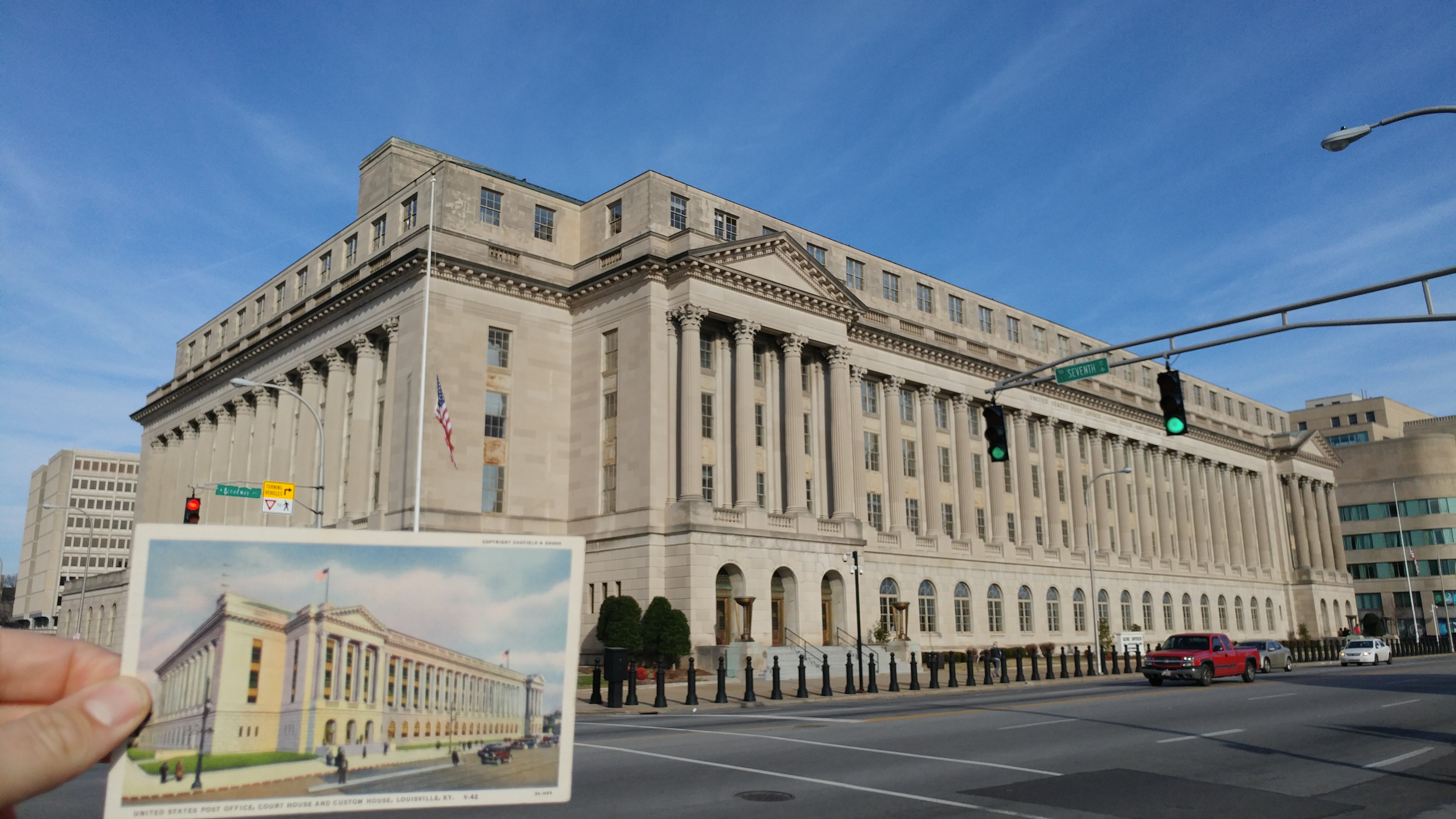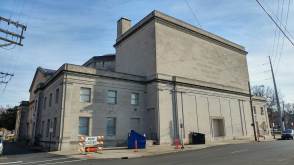
Lazy Sunday in Humboldt, TN, March 31, 2019. This and all images below belong to SonicGeography.com (All Rights Reserved).
Tennessee’s insane width (against its North-South length) presents a weird conundrum for anyone representing the state. Shortly after I moved to East Tennessee in 2013, a friend from Los Angeles surprised me with tickets to see FIDLAR at Exit/In in Nashville. I gave him a call on the long, winding, hour-losing ride home after the show to thank him, and he and I made vague plans should he ever come to Tennessee.
“If I ever get out there,” he said excitedly, “we’ve have to go to Graceland. I can’t miss that!”
I told him, in terms that wouldn’t put a huge damper on our conversation, that a trip to Graceland would require plastering at least three additional days onto his visit. For the amount of time we would spend in the car driving to Memphis (assuming some delays on I-40), drive to Tybee Island and jump in the Atlantic Ocean.
Largely for these reasons, my visit to Memphis for the wonderful Balancing the Mix conference at the end of March formulated my first trip to the Birthplace of Rock n’ Roll since 2011. For those doing the math, that was two years prior to my relocation to Knoxville. I’ve been a Tennessee resident for almost six years without one visit further West than Nashville. It’s disappointing, since I’ve met several visitors from Memphis, and I’ve been looking for a reason to get back out there. My 2011 visit, as brief as it was, clearly inspired me early in my geography career. One of the header images I use on this website is a photo of me standing outside of Sun Studios, after all.
Downtown Memphis (1935 / 2019)
Downtown Memphis, like I noted in my recent entry about re-tracing Ben Irving’s postcards in Nashville, reinforced a blanket notion about how increasingly privatized American cities have grown over the past few decades. Compared to when Ben mailed his postcards from Memphis (1935 and 1940), even the landmarks depicted have become surrounded by locked down landscapes.
MEMPHIS PARK
Before I made the (questionable) decision to check out Beale Street on that very cold and windy Saturday night, I stopped by Memphis Park, formerly Confederate Park, as seen in this postcard, mailed at midnight on March 16, 1935.

Obviously, the park is still there. I stood at the corner of Front St. and Jefferson Ave. and snapped this, the only shot anywhere close to recreating the postcard image.

Yeah, I’m fairly disappointed, too. The wind and cold were unbearable that night, which made even holding my phone-camera still enough to get the streetlights into focus nearly impossible. You can see the building in the background of both images. Today, it’s listed as the Cecil Humphreys School of Law (University of Memphis). In 1935, it was the Front Street Station US Post Office. The Court Square area was placed on the National Register of Historic Places in the early 1980’s.
In an attempt to subject myself to even more bitter winds at a slightly higher altitude, I looked around the intersection to see if I might get a superior angle. The first thing I noticed was a prominent parking garage opposite the intersection. Here’s a photo, which is actually ten times better than the above photo I took of the park. Figures.

‘Ooh!’ I thought. That upper level appears to be wide open, maybe I can just walk up the steps if it’s a public gara-NOPE, SORRY, TYLER, EVERY BLOCK OF EVERYTHING WITHIN 20 MILES OF ANY AMERICAN CITY’S CBD IS PRIVATIZED AND GUARDED 24/7 BY (probably underpaid) ON-SITE SECURITY CONTRACTORS. HERE’S A GATE IN YOUR FACE NOW PLEASE LEAVE WITHOUT A FUSS, SIR:

I’m sure my reaction wouldn’t have been so visceral had it not been miserably cold, but I would not have been any less disappointed. I was grateful that the twenty-first century had at least dumped the ‘Confederate’ from the park’s name in 2013. You win some, you lose some. Moving onto the much sunnier and less windy Sunday afternoon…
HOTEL CHISCA

Thankfully, this one was a cinch.

Hotel Chisca, considering how MLK’s assassination occurred a few blocks down the street, had been in a decades-long decline before it was restored earlier this decade into the modern apartments that opened in 2015. The building itself first opened in 1913 and was in full operation as such when Ben mailed this postcard on March 16, 1935. Historic Memphis has a good overview (with a great catalog of artifacts preserved) on their website, including this tidbit about the hotel’s role, like so many places around the city, in Rock n’ Roll history.
The hotel’s historic significance comes mainly from its connection to Elvis Presley. From 1949-56, its mezzanine was the broadcast base for WHBQ radio’s “Red, Hot, and Blue” program. It was from there that Dewey Phillips broadcast Elvis’ first record July 7, 1954. And Elvis’ first radio interview was also conducted in the hotel by Phillips.
While the streetcar lines seem to function mostly to carry tourists up and down Main Street, I was glad to see they were in operation, unlike the Desire line, which had been long since ripped out of Royal Street in New Orleans. Here are some pictures I took of the current iteration of the Chisca building on different sides.

Photo by Tyler Sonnichsen (SonicGeography.com) All Rights Reserved.

Photo by Tyler Sonnichsen (SonicGeography.com) All Rights Reserved.

Photo by Tyler Sonnichsen (SonicGeography.com) All Rights Reserved.
I’ve said this before, and I’ll say it again. Well, Sage Francis said it a while back, but I’ll borrow it from him in light of my experiences recreating these images of urban spaces in the United States: “the only thing that stays the same is change.”
Downtown Humboldt (1935/2019)

One of the more obscure locations from which Ben sent a postcard was Humboldt, Tennessee, a small down located on State Road 79, about 20 miles North of where I-40 runs today. As is my bad habit when leaving anywhere, I pushed the beginning of my (very long) drive home well beyond the time I originally planned. I’d say it was well worth it after finding an old, dusty copy of Booker T. and the MG’s’ Green Onions (Stereo press from 1968, not the original 1962 Mono… I’m not a millionaire). Still, the sun was quickly caving into the horizon on my back when I rolled into downtown Humboldt.

From what I understand (and according to the Humboldt Historical Society), the town was on the L&N Railroad line. I think that Ben drove on most of his Depression journeys, but the railway still influenced his decision to pass through. I can only imagine how much Humboldt suffered following the demise of that line.
Since 1935, at least Main Street installed signal lights to handle the “onslaught” of traffic, and street parking had been sectioned off. Some of the buildings depicted in the gray-scale black and white postcard had also been knocked down and replaced. I walked up and down E. Main Street trying to figure out where, exactly, this original image had been taken. Thankfully, Sunday afternoon was relatively slow so I could stand in the middle of the street and not get run down. I made it all the way to the point where you can see those trees on the horizon of the postcard, where I found a small, public green space at the corner of Central Ave.

The Humboldt Plaza 3 cinema didn’t appear to be doing heavy business, but it was open and people were wandering in and out of it. According to the best website on the internet Cinema Treasures, the theater opened with 800 seats in 1942, seven years after Ben passed through and mailed the postcard. It was triplex’d in the early 1980’s, I imagine because it was the eighties.
I thought it would be fairly straightforward since the postcard clearly indicated the street and vantage orientation. I had gotten a bit too far ahead of myself. After walking up and down both sides of the street, trying to match a scratchy black and white image from the 1930s with the small town’s current formation, I finally found my architectural Rosetta Stone:

The building on the NW corner of Main and S. 13th Avenue still has its gorgeous sculpted awning, albeit in two different colors. The left side was painted black to foil the whitewashing, as was the ornamentation over the windows. Whomever duplexed and renovated this building really had to commit; just look at the window decoration in the middle. To one person, it may be tacky, but to me… well, it’s tacky, but I love it. They bricked over the middle window with, it appears, slightly different, newer bricks. I can’t stop looking at it. It’s so distracting.
So, here was my conclusion. I took the first photo at an angle from the south side of the street, and I took the second about ten yards too far back, but you get the idea:


From what I can tell, the entire block opposite of the duplex building was torn down, eventually filled (sort of) with a newer Regions bank building. For a Sunday evening, there were a good handful of people wandering in and out of the Mexican restaurant and the movie theater. Strawberries featured prominently in the downtown corridor to signify the town’s annual Strawberry Festival, which appears to be Humboldt’s biggest tourist draw. I’m glad Ben Irving’s postcard drew me through here, the place seems to be a quintessential slice of West Tennessee that disappears under Memphis’ increasing weight.

Alright – thanks to you (reader) for following this long long-term project on Sonic Geography, and thanks to the Ben Irving Postcard Collection for continuously providing a worthwhile distraction. Back to grading finals. Here are a couple more photos I took that don’t necessarily connect directly to the postcard sites, but I still love:

























































